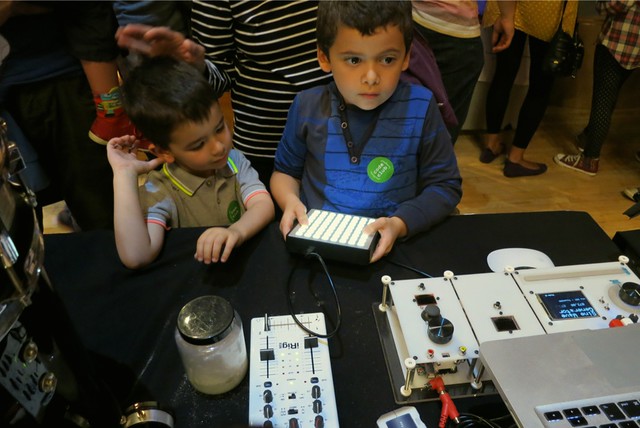Post ‘State Of Play…’
In a PPR group feedback session shortly after ‘State Of Play…’ I suggested we each write a 500 word post exposition reflection – to be published on the PPR website with a summarising overview. While everyone agreed I seem to be the only PPR member who actually did my homework… so I reproduce it here under the category of Critical Reflection.
REFLECTION
I was struck by a remark by one of the keynote speakers, Prof Philip Auslander of Georgia State University at the PARC NorthWest Carnival in early July ’11. He argued that artists have the rare privilege of usually not having to talk about their work – they can simply declare “The work speaks for itself.”. But this doesn’t hold true for artists undertaking PhDs and specifically Practice as Research who must speak for the work – it cannot speak for itself. So I’m going to reflect on my recent creative efforts – to contemplate and make explicit aspects of my praxis that I normally intuit in order to disclose something of my thinking and insight to date.
PROCESS
I’m used to working on creative projects that take a relatively short time from conception to initial realisation – usually about three to six months. But I’ve realised that one implication of undertaking a PhD is that the timeline for my creative process has been significantly dilated – I now find myself working on a project with a time scale of three to four years.
As a consequence I reckon I’ve spent the past nine months preparing and getting myself ‘ready’ – both conceptually by crystallising and formalising my initial Research Interest, defining my context and key influences and developing frameworks that will help me shape and focus my research – and practically through learning about creative technological solutions and fabricating prototype devices and useful tools.
I only combined these practical components for a ‘proof of concept’ demonstration in mid-June – the first time since I started my PhD in late-September that I’ve actually seen any physical evidence that an artistic study into the aesthetics of visible sound and vibration as described by Cymatic patterns and forms could actually be the basis for Visual Music – or a PhD Research as Practice project. So it was heartening (and something of a relief), that the initial realisation of ideas I’ve held in my head for so long, did show – despite some expected design flaws – a subtlety and musical expressivity I really want to underpin the project overall.
It occurred to me that in working steadily and systematically towards the initial prototypes presented at the ‘State Of Play…’ exposition, and for far longer than I’m used to, my research had almost become an ‘act of faith’ or at least an ‘act of faith-in-self’. This seemed significant somehow, since despite frequently telling myself “I haven’t actually started my PhD properly yet”, clearly I had… and I now see that the process of nurturing that initial seed of an idea in my Research Interest, into the seedling of the RD1 and then, with my first paper presented at EVA 11 in July 11, into a sapling that begins to show the youthful potential of it’s mature form, has (despite the overstretched metaphor) actually been consequential to the development of my research. I’m already looking forward to future benchmarks – such as my paper at the Understanding Visual Music 11 conference at the end of August, my Literary Review and approaching RD2 transition report that will contribute further towards the development and documentation of my research.
PRACTICE
My ‘experimental’ table and the objects on it reflect the current focus of my research – it is the ‘platform’ on which the Augmented Tonoscope will emerge and evolve – literally a personal ‘state of play’. I’ve come to see it as a metaphorical ‘bulls eye’ for concentric rings of targeted research activity. It’s the testing ground and ultimate destination for a range of conceptual, creative and technical outputs generated from my studio workbench, home computer desk, university workshops and open-access fabrication facilities such as Fab Lab Manchester. By establishing it early in my research I’m hoping to balance its distinctive style with an efficient functionality for future live performance on stage, experimental film-making in the studio and interactive installation in the gallery.
Many of the elements on display – including the table itself – were either found, fabricated, or bought for a purpose other than that for which they were designed. This last criterion is one way I’m trying to implement a personal research framework of embedding my own ‘artistic experimental method’ into my practice – by defining and applying a handful of artistic axioms that seem particularly relevant to my work, such as technology misuse -“the use of technological systems and products in ways they were never intended” – and serendipity – “the art of making the unsought finding”. Interestingly, I’ve since realised that while not consciously focussing on other artistic concerns – aesthetics, beauty, authorship and process – these had inevitably found their way in to my work – with student peers and members of staff commenting in seemingly conflicting terms on the simultaneous ‘delicacy’ and ‘density’ of the work.

